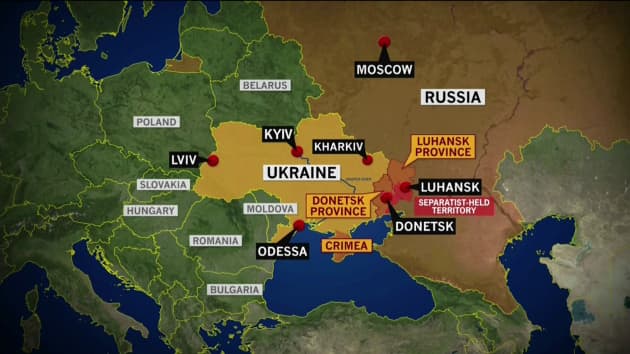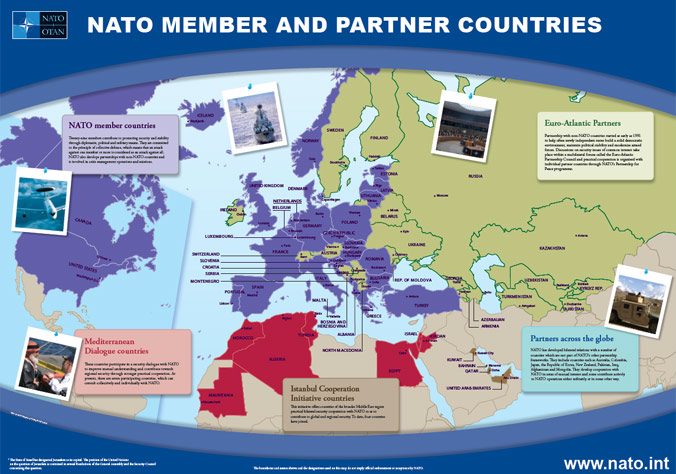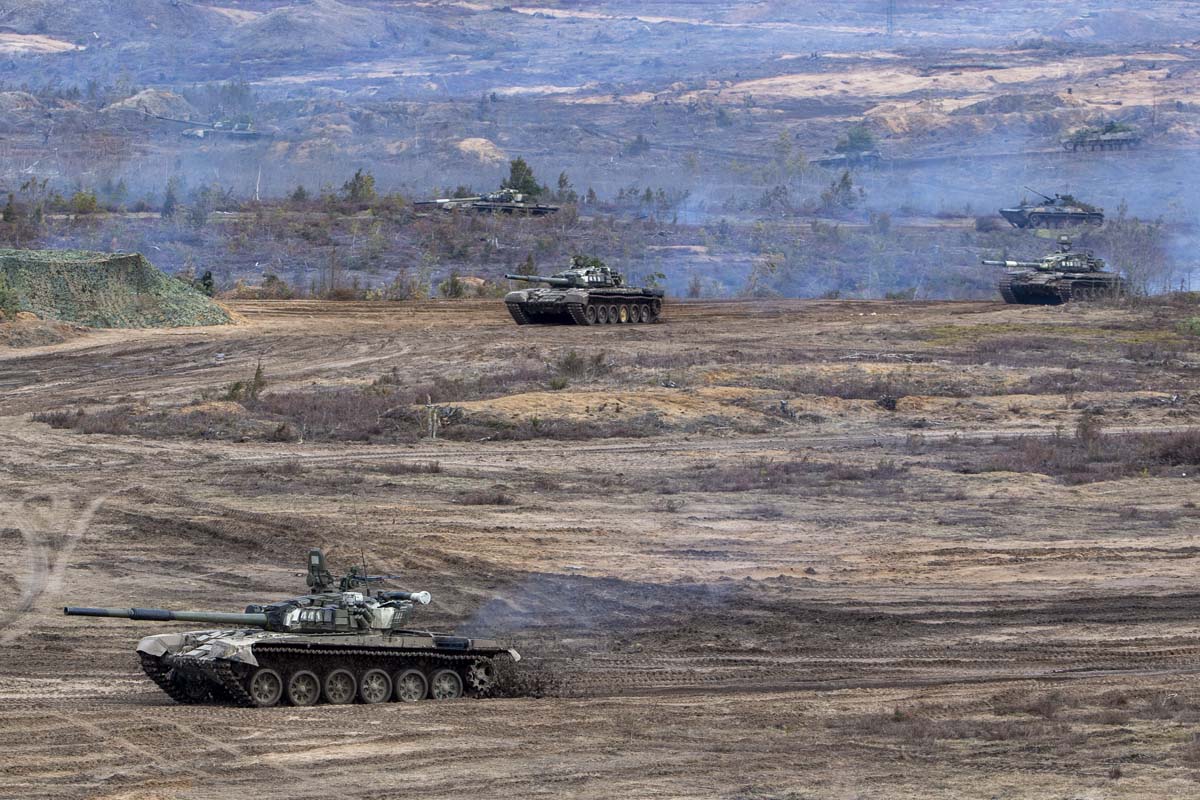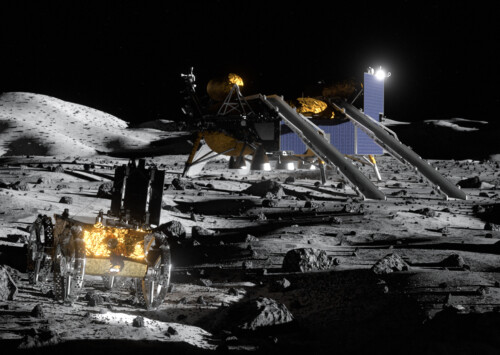Ukraine War: Total breakdown of USA-Russia entente
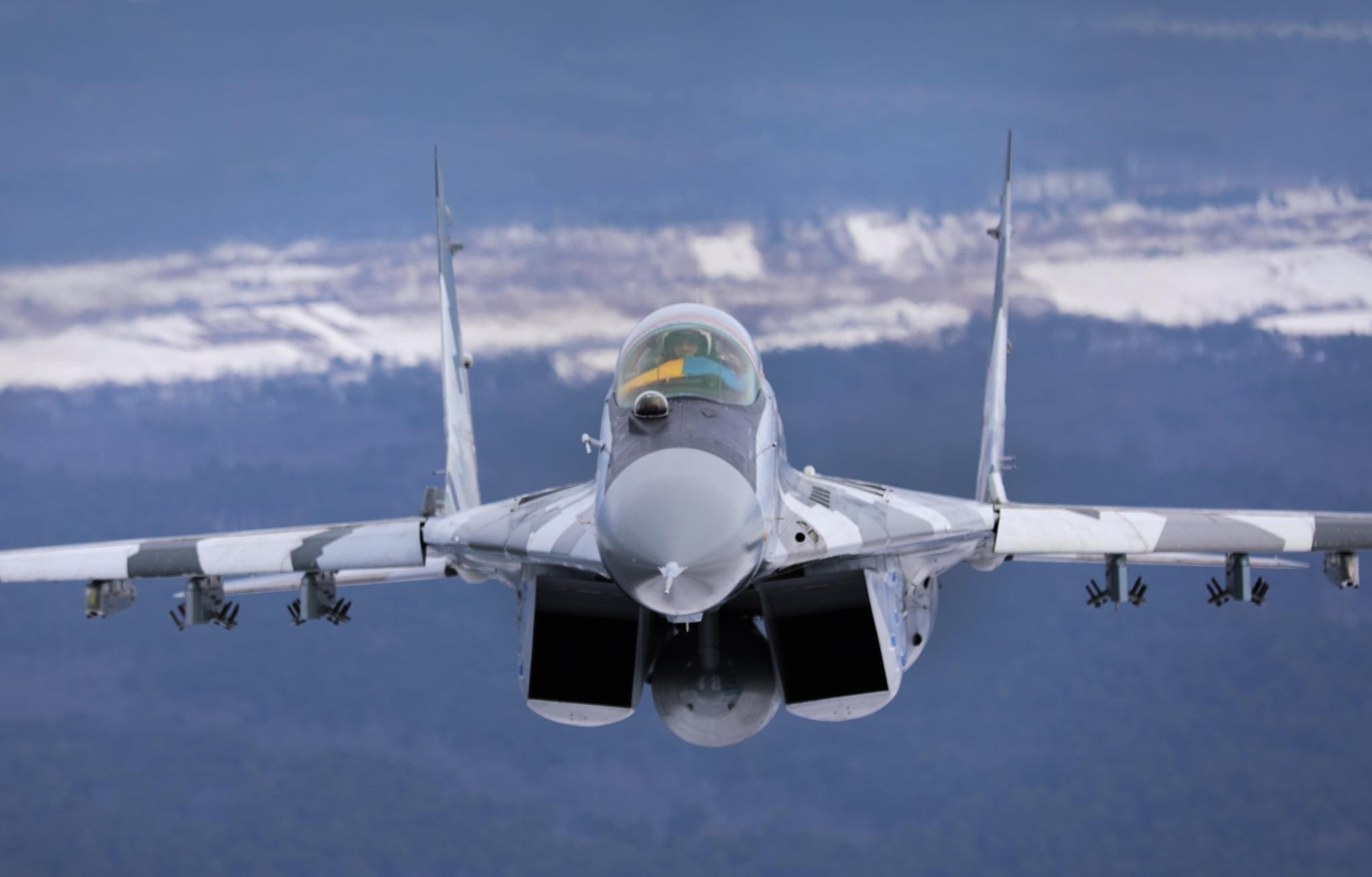
Ukraine's armed forces has uphill task against Russian military might (Twitter Photo: Ukraine Defence Ministry)
After weeks of buildup of Russian military troops, accompanied by constant denials by Russian President Vladimir Putin of any aggressive intent, and amidst several warnings by the United States President Joe Biden about an impending invasion of Ukraine, a full-blown war between Russia and Ukraine broke out after Russian troops entered Ukraine in a multi-pronged attack. Since then, the Russian military, using its significantly more heft, has rapidly advanced through Ukraine and is now on the verge of taking the capital Kiev, perhaps on Saturday itself.
The attacks began late on Wednesday night just as the United Nations Security Council was holding an emergency session, exhorting Putin not to launch any attacks and resolve the crisis peacefully. Putin tried to put a thin veil on the attacks by saying that the Russian troops had been sent only after calls for help by the two breakaway regions of eastern Ukraine, Luhansk and Donetsk, both controlled by pro-Russian militias. He also said that the troops had been sent to maintain peace and provide security to civilians.
Putin said that his actions were ‘‘self-defence against threats’’, claiming Moscow had no plans to occupy Ukraine. He added that the special operation was meant to ‘‘protect people living in Donbas who had been subjected to genocide’’.
However, there were hardly any takers for Putin’s spin on a well-planned and open, in-your-face kind of military attack that clearly had been in preparation over the past few months. It came within a day of the United States and several European nations imposing a string of severe economic sanctions on Russia and its various government-controlled entities.
Widespread condemnation by West
And sure enough, the West, notably the White House was quick to promise a comprehensive response to the Russian aggression. A flurry of diplomatic activity and strategic discussions between various NATO members ensued in the hours following the Russian attack. The US President Biden warned of “consequences the United States and our Allies and partners will impose on Russia for this needless act of aggression against Ukraine and global peace and security’’. The US has been coordinating the unified response to the crisis and is almost certain to lead the international community in dramatically increasing sanctions on Russia and since then sanctions have been placed by US, Europe and a few other countries on Putin and his senior ministers.
Joining Biden in criticism was German Chancellor Olaf Scholz who called the attack a ‘‘reckless act by President Putin’’ and a ‘‘terrible day for Ukraine and a dark day for Europe’’. This was critical as so far Germany has been accused of handling the Russian aggression with kid gloves. European Union Commission President Ursula von der Leyen called Russia’s actions a ‘barbaric attack’ and said she will present EU member states with ‘massive and strategic’ sanctions against Russia for approval later today. ‘‘These sanctions are designed to take a heavy toll on the Kremlin’s interests and their ability to finance war. And we know that millions of Russians do not want war,’’ she added.
The attack also led four members of NATO Poland, Estonia, Latvia and Lithuania to trigger NATO Article 4 to launch consultations within the alliance over Russia’s attack on Ukraine. Article 4 of NATO talks of parties to consult each other “whenever, in the opinion of any of them, the territorial integrity, political independence or security of any of the Parties is threatened.” Triggering Article 4 can lead to collective action among the 30 member states.
It was last invoked by Turkey in February 2020 after dozens of Turkish soldiers were killed by an attack by Syrian government forces in opposition-held areas of northern Syria. Turkey had also invoked it earlier in 2015 to inform the alliance of its response to terrorist attacks in the country; then twice in 2012 after a Turkish warplane was shot down in northern Syria and after Turkish civilians were killed by Syrian shelling; and in 2003 when it asked for alliance help to protect its population from any spillover from the war in neighboring Iraq.
On two of those occasions, NATO responded with military aid, sending Patriot missile batteries to protect against Syrian attacks in 2012 and sending aircraft and missile batteries to southeastern Turkey along the border with Iraq in 2003.
Much more than grandstanding by Putin
Despite several warnings by the US intelligence agencies of an imminent attack on Ukraine by Russia, most in the international community had hoped that Putin was not going to go all the way and instead was grandstanding to gain some concessions from the West as well as cater to domestic audience in order to boost his ratings at home by presenting himself as someone who could bring Russia back at the global centre-stage and a power at par with the United States rather than a has-been as many of his opponents had been presenting.
Surely, Putin has been presenting the image of a very strong leader, determined to bring the ‘glory days’ of the cold-war period Soviet Union when the ‘world listened to the USSR with respect’. And in many ways, he has succeeded. Russia stood by Syrian President Bashar Al Assad for nearly a decade while the Western militaries as well as armed militias tried to destabilise him and overthrow him, leading to the worst humanitarian crisis in the world in decades. Assad has emerged largely unscathed from the crisis, while the Syrian opposition has been decimated, politically as well as militarily.
Putin’s military intervention in Crimea, another breakaway region of Ukraine with a sizeable Russian population, in 2014 which first broke away from Ukraine and later was annexed by Russia, is another key moment. Even at that moment, the Western world was highly critical of Putin and promised a strong riposte. However, eight years on, Crimea is now firmly in Russian grip and Ukraine seems to have given up all hopes of reclaiming its breakaway territory.
The sequence of events in Crimea seem to be repeated in Luhansk and Donetsk, both of which are located in eastern Ukraine that also have a significant ethnic Russian population. Most experts believe that Russian forces are actively aiding the rebels in these regions to help them take control over the parts of the Donbass region that is still under Ukrainian control. Russia has been accused of sending in military hardware as well as men to boost its allies in Ukraine.
Breakdown of trust between Washington and Moscow
The Ukrainian war is the outcome of over a decade of worsening relations between Russia and the United States. The two nations have been on the opposing sides of several international crises, notably the war unleashed on Syria by the US and its allies, in an attempt to depose Syrian President Bashar Al Assad. In a sharp contrast from its stance on a similar western raid on Libya, Russia proactively supported Assad and deployed its Air Force planes in Latakia that it used to suppress the Syrian rebels and after almost half a decade of grinding war, Assad is stronger than ever.
Even while it was supporting Assad’s forces in Syria, the Russians also launched their campaign in Crimea in southern Ukraine to take control of Sevastopol, the key port on the Black Sea and the headquarter of the Black Sea Fleet of the Russian Navy. In fact, the Crimean war, which resulted in annexation of the former Ukrainian province by Russia, was sparked off due to Russian concerns over the security of their access to the port that had been leased from Ukraine since the fall of the Soviet Union.
It was not just about projecting Russian military might outside its borders, one of the key differences between the Cold War rivals relates to various arms control treaties that date back from the Soviet era.
Since 1970s, both the powers have entered into various agreements, coming with check and balances, to keep their nuclear arsenal under control. Beginning with SALT (Strategic Arms Limitation Treaty) first signed in 1977 to the START I and SORT, the two sides have managed to bring down the total number of nuclear weapons from 6000 in 1991 to 1550 in 2011.
Despite the obvious success of the successive agreements, the two sides came to the brink and almost let the pact expire in February 2021 as the outgoing US President Donald Trump had consistently refused to agree to an extension of the New START treaty that was signed in 2010 and entered into force on February 5, 2011 for a period of 10 years.
Claiming that Russia had violated several provisions of the treaty and developed new weapons and thus gained strategic superiority over the US, Trump had refused to either agree to an extension or negotiate a fresh deal. Trump had kept this stance right up to January 20, 2021, when he demitted office. Fortunately, his successor in the White House Joe Biden agreed to an extension for a period of five years, as provided in the original treaty and thus gained some time for the two sides to renegotiate a new pact or extend the same for a longer period.
While Biden managed to rescue the New START, he has so far done nothing about another key treaty, the Intermediate Nuclear Force Treaty that governs the intermediate range nuclear weapons. It was signed in 1987 and it required the two sides to verifiably eliminate all ground-launched ballistic and cruise missiles with ranges of 500 km -5,500 km. It was the INF Treaty, with its unprecedented and intrusive inspection regime, including on-site inspections, that laid the foundation for the START I treaty.
The Treaty entered into force June 1, 1988 and within three years, both the sides had met their targets, destroying a total of 2,692 missiles. The agreement was multilateralised after the breakup of the Soviet Union, and current active participants in the agreement include the United States, Russia, Belarus, Kazakhstan, and Ukraine. Turkmenistan and Uzbekistan are also parties to the agreement but do not participate in treaty meetings or on-site inspections. The ban on intermediate-range missiles is of unlimited duration.
Both the United States and Russia have raised concerns about the other side’s compliance with the INF Treaty. The United States first publicly charged Russia in 2014 with developing and testing a ground-launched cruise missile—the 9M729 missile—with a range that exceeds the INF Treaty limits.
Russia denies that it breached the agreement and has raised its own concerns about Washington’s compliance. Moscow has charged that the United States is placing a missile defense launch system in Europe that could also be used to fire cruise missiles, using targets for missile defense tests with similar characteristics to INF Treaty-prohibited intermediate-range missiles, and is making armed drones that are equivalent to ground-launched cruise missiles.
With both the countries standing firm on their positions, Trump said he would terminate the agreement, saying that not only is Russia violating it but China also needed to be part of the treaty as it has developed a vast arsenal of missiles. And in August, 2019, the United States formally withdrew from the Treaty.
Alongside these developments is the issue of NATO expansion. The Russians say that in 1991, the US made a categoric promise not to expand the NATO, North Atlantic Treaty Organisation, eastwards after the reunification of East and West Germany. However, over the past three decades, NATO has expanded rapidly, absorbing nearly all former members of the Warsaw Pact. Now, the Czech Republic, Poland, Hungary, Bulgaria, Estonia, Latvia, Lithuania, Romania, Slovakia and Slovenia are all part of NATO.
Russia has been saying, before Putin but definitely more forcefully for well about a decade that it would not stand by and watch if NATO expanded even further to absorb Georgia and Ukraine, the two countries that NATO has often talked of as future members. Way back in 2008, Putin had warned the US clearly against this possibility. “No Russian leader could stand idly by in the face of steps toward NATO membership for Ukraine. That would be a hostile act toward Russia,” Putin had told William Burns, the then US Undersecretary for Political Affairs.
Although NATO did not announce a formal membership plan for Ukraine and Georgia at the Bucharest Summit, following the warning by Putin, the alliance did clearly say that “that these countries will become members of NATO,” and since then it has admitted Albania, and Croatia in 2009. The latest members to join NATO were Montenegro (2017) and North Macedonia (2020).
Neutrality for Ukraine & Georgia
Russia has asked for clear guarantees by the US and NATO on their political and military activities in proximity to Russia. It has notably asked for ending eastward expansion of NATO and ban on the US establishing bases or cooperating militarily with former Soviet states. Another condition of a proposed agreement put forth by Russia bars both signatories from deploying military assets in areas outside their national borders that “could be perceived by the other party as a threat to its national security.” Heavy bombers and “surface warships of any type” shall refrain from deploying outside the party’s national airspace or territorial waters to areas where they could strike the other’s territories.
The US has rejected these terms and many analysts say that most of Russian demands, such the ban on future NATO enlargement, are effectively nonstarters and that the Kremlin has proposed them in bad faith.
The latest developments suggest that Ukraine may be amenable to the idea of neutrality between NATO and Russia and indeed it may be one of the ways forward to end the current crisis, even if some may say that Putin has extorted this promise of neutrality.
As and when peace returns to the area, it would be in the interest of the US and Russia to undertake a comprehensive review of their ties and take steps to enhance mutual confidence and get back to a relationship of trust and balance. It is a big ask, but that is precisely what the world needs for peace and calm to return to a world which is increasingly looking unsettled, with various countries getting into confrontational mode.

